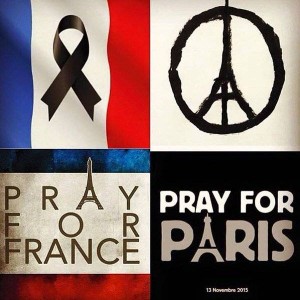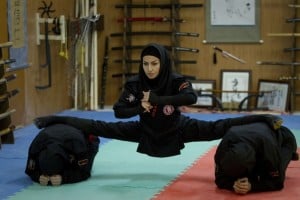
My eyebrows raised when I read this article on IslamOnline. The article, entitled Study: Men Objectify Scantily Clad Women, used a current study conducted by well-known Princeton psychologist, Dr. Susan Fiske, to promote modest clothing.
I am familiar with Dr. Fiske’s work, and I couldn’t help but question whether IslamOnline was misrepresenting the study in an effort to promote the necessity of hijab. As someone doing her Ph.D. in social psychology, I am familiar with how the results of social psychological studies can be manipulated through the use of language in such a way to support an argument one is trying to make and consequently taking the results out of context. And this is what seems to have happened in this IslamOnline article.
Amel Abdullah, the author of the piece, begins her article by describing the study and explaining the three main results. She reports that:
- images of scantily clad women were better remembered by heterosexual male participants
- when the male participants viewed scantily-clad women, areas of the brain associated with “tool use, hand manipulation, and the urge to take action” were activated
- men who scored high on hostile sexism thought of these scantily-clad women as less human.
Immediately after presenting these findings, she starts discussing the role of the hijab and how it protects women. She makes a leap from images of women in bikinis to the hijab, which she describes as “religiously mandated modest dress that covers the shape of the body and includes the headscarf or veil.” This leap is highly inappropriate and illogical. Let me explain why.
I was able to obtain a lay summary of the study from Dr. Fiske and after comparing the lay summary to Abdullah’s article, found Abdullah’s work to be biased and her use of the study findings inappropriate.
To begin with, Abdullah’s terminology is very problematic and re-interprets the results to suit her argument. The lay summary for the study, as well as all media outlet reports, are clear that the four types of images used were of fully clothed men and women, and scantily clad men and women. Specifically, the images of scantily clad women were of women in bikinis. If one ignores the way in which Dr. Fiske and her research team operationally defined* “scantily clad” one risks misunderstanding the results. And this is what Abdullah has done.
IslamOnline explains (emphasis mine):
When psychologist Susan Fiske and a team of researchers at Princeton University performed MRI brain scans on heterosexual men who viewed a series of images showing both scantily clad and fully clothed men and women, they found that the men had an unmistakable response to women wearing less clothing.
The less they wore, the more likely it was for the premotor cortex and the posterior middle temporal gyrus to light up. These are the areas of the brain associated with tool use, hand manipulation, and the urge to take action.
It should not be “women wearing less clothing” but rather “women wearing bikinis.” Bikinis is clear. Less clothing is unclear. Less than what? We know that a bikini is a two-piece swimsuit. It usually exposes the midriff, legs, arms, etc. Additionally, saying that “the less they wore triggered these responses” implies that various levels of clothing coverage, or various stages of undress, were presented to the participants in the study.
This wording alters the realities of the study completely. Various stages of undress were not presented to the participants. Only two levels of clothing were presented. There were no measurements of reactions at varying levels of clothing. IslamOnline’s use of the phrase “less clothing” is deceptive and twists the findings of the study, which showed pictures of women in a very specific form of “less clothing” – the bikini.
The Daily Princetonian explains (emphasis mine):
Fiske’s team used an MRI machine to scan the brains of the students while they viewed a series of photographs of men and women, some of whom were fully clothed and others of whom wore only swimsuits.
The pictures of bikini-clad women activated brain regions associated with objects or “things you manipulate with your hands,” Fiske said.
The lay summary states (emphasis mine):
…heterosexual men, in a surprise memory test, were significantly better at recognizing bikini-clad female bodies (with heads removed), than they were at recognising any of the other three types of images or any kind of faces.
The researchers’ operational definition* of “fully clothed” was not provided. However, in my personal correspondence with Dr. Fiske, she mentioned that the effects of objectifying women were not seen for women in traditional Western attire. Therefore, my assumption is that “fully clothed” for this study was a woman wearing Western clothing, which is not the full hijab. Therefore, women who dress like the average North American/Westerner were not objectified by the male participants.
IslamOnline continues:
According to a lay summary of Fiske’s study provided to IslamOnline.net, when a man’s mentalizing network shuts down, this means he views sexualized women as “less human.”
The lay summary states:
As predicted, hostile sexism predicted less activation of otherwise reliable social cognition networks…in response to looking at bikini-clad women. This implicates more hostile attitudes in predicting deactivation of the mentalizing network, consistent with viewing sexualized women as less human.
Mentalizing is defined as “considering other people’s thoughts and feelings.” Therefore, men who held stronger hostile sexist** attitudes toward women were more likely to think of bikini-clad women as less human. Not all men and all women in any type of clothing.
Abdullah also speaks of Dr. Peter Glick’s study, in which he found that women in positions of power who wear provocative clothes at work may be less respected. However, within an American context, within which this study was conducted, what is provocative? What may be provocative in reference to full hijab is not going to be provocative in the average American context.

Abdullah then continues the rest of the article, describing the protective and mandatory nature of the hijab. Stating that the hijab protects women from unwanted sexual attention by using this study as proof is a stretch. Unfortunately, I think we all know women in full hijab who have been sexually harassed and/or assaulted. Using this study to prove its protective capabilities is deceptive. The current study found that images of women in bikinis were objectified, not images of women in pant suits, jeans and tank tops, professional skirts and blazers, and so on and so on. In fact, as I mentioned earlier, average, non-hijab, Western-attired women were not objectified. Therefore, one need not wear full hijab to not be objectified.
Now, to be very clear, I am not arguing against the hijab. I am saying that using this psychological study to imply that any clothing short of the full hijab makes one vulnerable to being objectified is nonsensical. This study does not prove that. No psychological study ever proves anything (but that’s scientific debate for another time). What this study implies is that heterosexual men are somehow hard-wired to objectify women in bikinis. That’s it.
In her article, Abdullah takes this study and the women involved completely out of their cultural contexts. Dr. Fiske’s study looked at images of women in average American attire and bikinis. To use this study to “prove” that full hijab will thus protect women from objectification assumes that if women are not in full hijab, then they may as well be wearing bikinis, because they’ll be objectified the same. And this of course is highly offensive to women who do not wear full hijab. We are then assumed to be fair game for objectification. And I’m not even going to get into the possible moral implications involved.
If one wants to use psychological studies to prove one’s point, then one should at least choose a study that actually does prove the point. Adullah’s use of early stage psychological studies, which the researchers have acknowledged require further investigation, only misuses and misrepresents findings which could have real and serious relevancies for other situations.
*An operational definition is defining a research concept, often a variable being measured, in such a way so as to enable others to independently measure the variable. This would mean one would have to define it in such as way to allow readers to understand exactly what the researcher means when she measures that variable. In this case “scantily clad” was defined as “bikini” so that we know exactly what was measured.
** Hostile sexism is a form of sexism conceptualized by Drs. Fiske and Glick. It is one of two forms sexism can take, with the other being benevolent sexism. Together the two concepts make up Ambivalent Sexism. Hostile sexism is the type of sexism most of us are familiar with – “Women are trying to get ahead of men,” “Women are trying to take our rights away,” etc. It’s usually hateful. Benevolent sexism sounds positive in tone but can also be seen to hold women back. “Only women have the special abilities to care for chidren therefore they must stay at home to take care of them,” “Women are too pure to be dealing with all those men out there so should stay inside the home.” etc. It usually places women on a pedestal.











